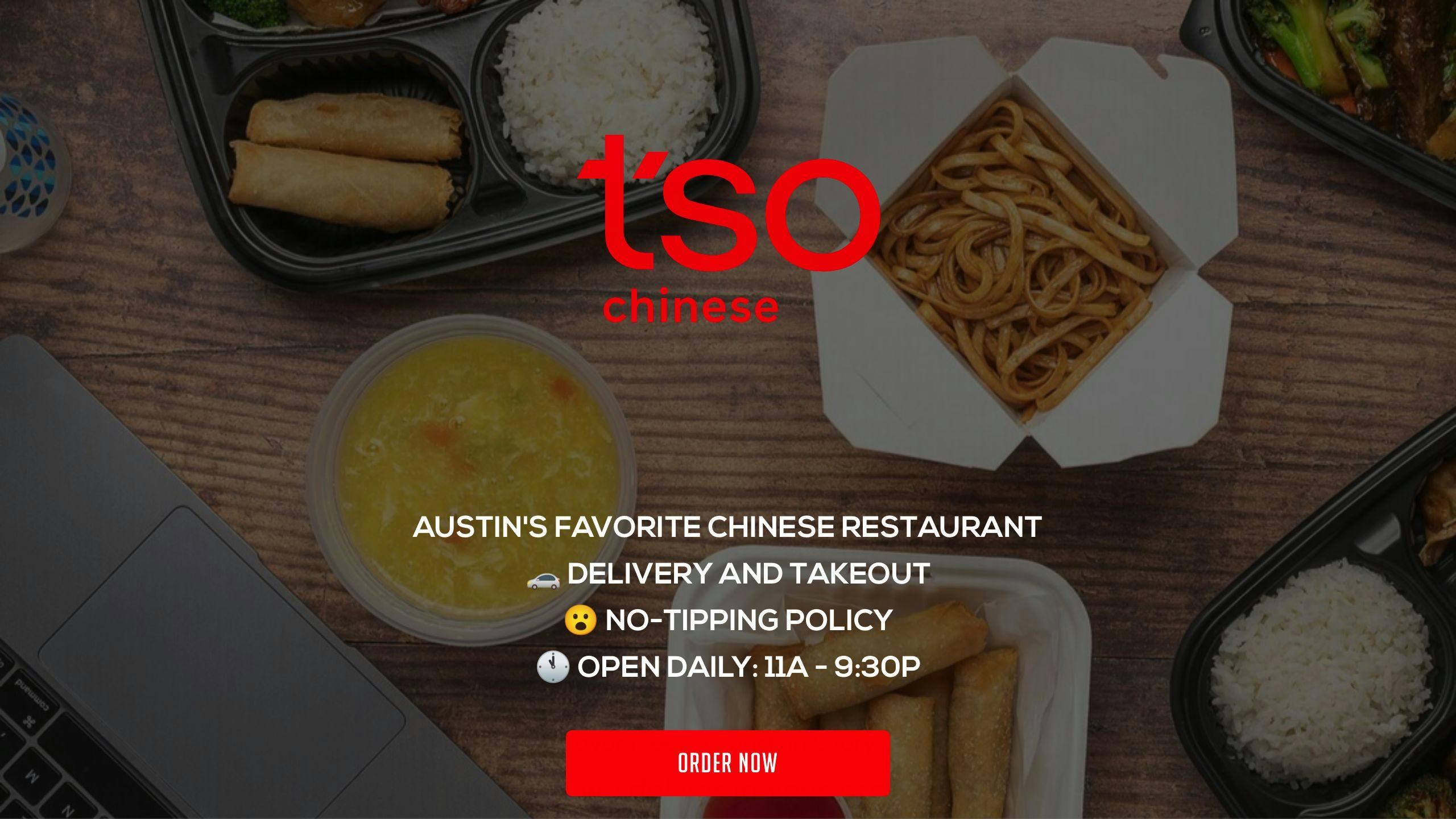May 11, 2024

Voice AI technology is transforming the restaurant industry, enabling Chinese restaurants to streamline operations, reduce costs, and enhance customer experience. By integrating voice ordering systems, restaurants can:
Chinese restaurants are successfully implementing voice AI, such as:
RestaurantImplementationResultsStarbucksVoice ordering through Tmall Genie (Alibaba partnership)Expanded delivery services to over 2,900 stores across ChinaTso Chinese TakeoutVoice ordering via Voicify platformReduced labor costs and improved customer satisfactionMeituan-DianpingVoice-to-order feature for visually impaired customersImproved customer experience and demonstrated social responsibility
By adopting voice AI technology, Chinese restaurants can create a seamless and enjoyable experience for customers, setting a new standard for the industry and gaining a competitive edge.
Traditional restaurant operations relied heavily on manual processes, leading to inefficiencies and errors. Manual ordering systems, where customers place orders with staff, have been the norm. However, this approach is plagued by issues such as misheard orders, incorrect item substitutions, and lengthy wait times.
The shift to digital transformations has been a game-changer for restaurants, enabling them to streamline operations, reduce labor costs, and improve customer satisfaction. Voice AI technology has emerged as a key player in this digital revolution, offering a transformative solution for restaurants.
Restaurants face several operational challenges, including:
IssueImpactStaff overheadIncreased labor costsOrder inaccuraciesFood waste, customer complaintsLong wait timesCustomer dissatisfaction, revenue losses
Voice AI technology presents a solution to these common operational issues, enabling restaurants to automate the ordering process, reduce errors, and improve customer experience.
By leveraging voice AI technology, restaurants can overcome these operational challenges and improve their overall efficiency. In the next section, we will explore the practical applications of voice AI in the restaurant industry, highlighting successful implementations and the benefits they have brought to restaurants.
Let's explore real-world examples of Chinese restaurants that have successfully integrated voice AI technology, with data-driven results.

Starbucks partnered with Alibaba to launch voice ordering through Tmall Genie, Alibaba's smart speaker. This integration allowed customers to order their favorite Starbucks beverages and food using voice commands, with deliveries arriving within 30 minutes. The partnership has been a huge success, with Starbucks expanding its delivery services to over 2,900 stores in China across nearly 80 cities.
Partnership DetailsResultsVoice ordering through Tmall GenieExpanded delivery services to over 2,900 stores in China30-minute deliverySuccessful partnership with Alibaba

Tso Chinese Takeout, a no-dine-in concept, chose the Voicify platform to implement voice ordering. This integration improved call-in query management, enabling customers to place orders quickly and efficiently. The voice ordering system reduced labor costs and improved customer satisfaction, allowing Tso Chinese Takeout to focus on its core business.
BenefitsResultsImproved call-in query managementReduced labor costsQuick and efficient orderingImproved customer satisfaction
Meituan-Dianping, a leading Chinese food delivery company, introduced a voice-to-order feature that caters to the visually impaired. This feature demonstrates social responsibility alongside increased business efficiency. By leveraging voice AI technology, Meituan-Dianping improved the overall customer experience, making it easier for customers to place orders and access their services.
FeatureBenefitsVoice-to-order feature for visually impairedImproved customer experienceIncreased business efficiencyDemonstrates social responsibility
Voice AI technology offers several advantages to Chinese restaurants, impacting efficiency, customer satisfaction, and business insights.
Voice AI reduces wait times and errors, leading to higher customer satisfaction and repeat business. By allowing customers to place orders quickly and efficiently, restaurants can minimize mistakes and miscommunication. This results in higher customer satisfaction, as customers receive their orders accurately and on time.
Voice AI brings operational improvements and valuable data insights to restaurant management. By automating routine tasks, restaurants can free up staff to focus on critical tasks like food preparation and customer service. Voice AI technology also provides restaurants with data on customer behavior, preferences, and ordering patterns, enabling informed decisions about menu development, marketing, and operational optimization.
Voice AI can give restaurants a competitive edge in a market where customer experience is crucial. By offering a seamless and efficient ordering experience, restaurants can differentiate themselves from competitors and attract a loyal customer base.
BenefitsDescriptionImproved Customer ExperienceReduces wait times and errors, leading to higher customer satisfactionOperational Gains and DataAutomates routine tasks, provides valuable data insights for informed decisionsCompetitive AdvantageOffers a seamless and efficient ordering experience, differentiating restaurants from competitors
Chinese restaurants face several challenges when adopting voice AI technology. In this section, we will discuss the potential technical, infrastructural, and social challenges that restaurant owners may encounter.
Technical Integration
Restaurants need to ensure that the voice AI system integrates seamlessly with their existing systems, including point-of-sale (POS) systems, inventory management software, and other critical tools. This can be a complex process, requiring significant investment in IT infrastructure and staff training.
User Buy-in
Some customers may be hesitant to interact with AI voice assistants, preferring traditional ordering methods. Educating customers about the benefits and ease of use of voice AI can help increase adoption. Restaurants must also ensure that their staff is comfortable working alongside AI voice assistants and can effectively troubleshoot any technical issues that may arise.
Data Privacy Concerns
Restaurants must ensure that customer data collected by the AI system is safeguarded and used transparently. Implementing robust security measures, such as encryption and secure data storage, can help build customer trust.
Security Measures
Restaurants must also be transparent about how customer data is used and provide options for customers to opt-out of data collection.
By understanding these challenges, Chinese restaurants can better prepare themselves for the adoption of voice AI technology and ensure a smooth transition to a more efficient and customer-centric ordering experience.
To successfully integrate voice AI technology into your restaurant operations, follow these key steps:
Before implementing voice AI, assess your restaurant's current digital ecosystem and business plan. Identify areas where voice AI can enhance operations and customer service. Ensure that your voice AI system is compatible with your existing point-of-sale (POS) system, inventory management software, and other critical tools.
Provide comprehensive training for your staff on the voice AI system, focusing on its features and benefits. Educate customers about the voice AI system through clear signage, menu descriptions, and staff communication.
Continuously monitor the performance of your voice AI system, gathering feedback from customers and staff. Analyze this data to identify areas for improvement and refine the system.
Implementation StepsDescriptionPlanning and System CompatibilityAssess digital ecosystem and business plan, ensure system compatibilityStaff Training and Customer EducationProvide comprehensive staff training, educate customers about voice AI systemPerformance Monitoring and FeedbackMonitor system performance, gather feedback, and refine the system
By following these recommendations, you can successfully implement voice AI technology in your restaurant, improving operational efficiency, customer satisfaction, and ultimately, your bottom line.
The use of voice AI technology in Chinese restaurants is transforming the way they operate and interact with customers. By adopting voice ordering, restaurants can simplify their operations, reduce labor costs, and improve order accuracy.
BenefitDescriptionStreamlined OperationsReduce labor costs and improve order accuracyEnhanced Customer ExperienceProvide a seamless and efficient ordering experienceCompetitive AdvantageStay ahead of the competition and increase revenue
As voice AI technology continues to evolve, we can expect to see more advanced systems that can understand complex orders, remember individual preferences, and provide personalized recommendations. Restaurants that adopt voice AI technology will be well-positioned to improve customer satisfaction and increase revenue.
By embracing this technology, Chinese restaurants can create a seamless and enjoyable experience for their customers, setting a new standard for the industry.

Enter your information in the form to receive a call from Loman and place an order like a customer would!